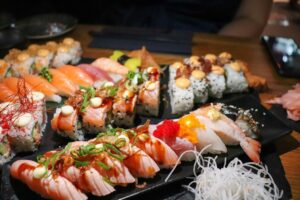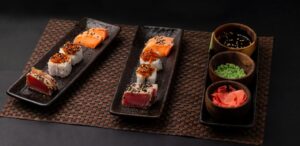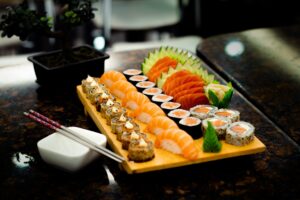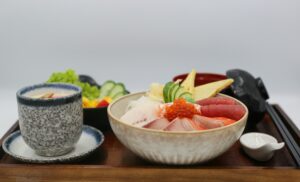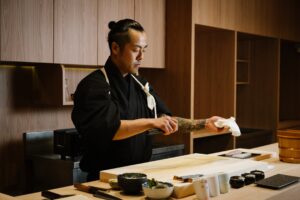
Must Eat Restaurants in Singapore: Essential Dining Spots You Can’t Miss
To truly eat in Singapore is to experience a vibrant mix of flavors and cultures at every turn. The city-state’s strategic location has made it a melting pot of Chinese, Malay, Indian, and Peranakan influences—Peranakan food itself is a unique blend of Chinese and Malay culinary traditions—creating signature dishes that you simply can’t find anywhere else.
What makes Singapore truly special isn’t just the quality of its food—it’s the democratic nature of great dining. Whether you’re savoring Hainanese chicken rice at a bustling hawker centre or indulging in innovative tasting menus at a world-class restaurant, exceptional flavors are accessible to every budget. This guide will take you through the essential Singapore restaurants that define the Lion City’s culinary identity, from heritage establishments that have been serving delicious food for generations to modern innovators pushing boundaries.
From the iconic chilli crab that graces every tourist’s must-try list to the humble yet perfect bowl of bak kut teh that locals crave, we’ll explore the dishes and venues that make Singapore a true food capital.
Best Singapore Restaurant Categories
Singapore’s dining scene operates on multiple levels, each offering distinct experiences and value propositions. At the foundation are the legendary hawker centres—UNESCO-recognized community dining hubs where dozens of specialized stalls serve everything from $3 signature dishes to incredibly tasty specialties that have remained unchanged for decades. These aren’t just places to eat; they’re cultural institutions where recipes pass through generations and where a perfectly executed dish served on a plastic plate can rival the sophistication of fine dining.

Traditional Restaurants
Traditional restaurants occupy the middle tier, offering more formal settings while maintaining authentic flavors. Many of these establishments have been family-run for 50+ years, perfecting signature recipes and building loyal followings. These Singapore restaurants typically serve dishes that are traditionally eaten as communal meals, with extensive menus featuring both popular dishes and regional specialties, including a variety of roast meats such as roast duck, pork belly, and char siu.
Fine Dining Scene
At the apex sits Singapore’s impressive fine dining scene, anchored by multiple Michelin-starred establishments that blend international techniques with local ingredients. These venues offer carefully curated tasting menus, innovative interpretations of traditional flavors, and dining experiences that rival any global food capital.
The beauty of Singapore’s food landscape lies in its accessibility across all price points. You might find a dish served dry at a hawker stall that’s prepared with the same dedication to quality as a refined version at a high-end establishment. This democratic approach to great food—where a $4 plate of Hainanese chicken rice can be legitimately considered among the world’s best versions of the dish—is what sets Singapore apart from other culinary destinations.
Key signature dishes that define the Singapore restaurant scene as a source of popular dishes include:
- Fragrant rice cooked in chicken fat that accompanies perfectly poached chicken
- Nasi lemak with its fragrant coconut rice, spicy sambal, and assorted accompaniments
- Spicy laksa enriched with coconut milk
- Stir-fried char kway teow with its distinctive wok hei smokiness
- Famous chilli crab with its sweet-savory tomato and egg sauce, literally “Singapore on a plate”
- Street food and breakfast staples such as roti prata, a crispy pan-fried flatbread often served with curry dipping sauce
- Roti canai, a Malaysian-style fried dough known for its crispy, chewy texture, typically enjoyed with curry dipping sauce

Legendary Hawker Centres & Food Courts
Fine Dining Scene
Maxwell Food Centre stands as Singapore’s most tourist-friendly hawker centre, yet it maintains its authentic local character. The star attraction is Tian Tian Hainanese Chicken Rice, where queues regularly stretch 30+ people deep for their $4-6 portions of silky chicken served over fragrant rice cooked in chicken stock and rendered chicken fat. The stall gained international fame after Anthony Bourdain declared it his favorite version of the dish, but locals had been lining up here long before the celebrity endorsement.
Lau Pa Sat Festival Market
Lau Pa Sat Festival Market transforms into Singapore’s most atmospheric dining experience after dark. While the restored Victorian iron structure houses standard hawker fare during the day, the adjacent street becomes Satay Club once the sun sets. Over 20 stalls set up grills directly on Boon Tat Street, creating a carnival-like atmosphere where the smell of charcoal-grilled meat skewers permeates the air. The satay here is typically served with cucumber, onions, ketupat rice cakes, and a rich peanut curry dipping sauce.
Open 24 hours, it’s particularly magical during late-night sessions when the city’s energy is palpable.
Newton Food Centre
Newton Food Centre gained Hollywood fame as a filming location for Crazy Rich Asians, but its reputation extends far beyond movie appearances. Some stalls have been serving exceptional black pepper crabs here for decades, where the aromatic sauce clings perfectly to fresh mud crab shells. Some offer some of the city’s best fried noodles, while multiple stalls compete fiercely for the title of best carrot cake (which, confusingly for visitors, contains no carrots but is made from radish). Pork belly is a popular option at many roast meat and noodle stalls, prized for its tender texture and savory flavor.
Old Airport Road Food Centre
Old Airport Road Food Centre represents the authentic neighborhood hawker experience with over 100 stalls serving everything from traditional breakfast sets to elaborate dinner spreads. Toa Payoh Rojak masterfully balances sweet, sour, and spicy flavors in their fruit and vegetable salad, while Nam Sing Hokkien Mee has been perfecting their dark, rich prawn and pork noodle dish for over 40 years. The prawn broth here is intensely flavorful, enhanced with pork bones and finished with a touch of lime juice. For rice dishes like nasi lemak, basmati rice is often prized for its fragrance and fluffy texture, elevating the overall experience.
Navigating hawker centres requires understanding the chope system—reserving tables with tissue packets or cards—and knowing that cash is king, though some stalls now accept mobile payments. Peak hours (12-2pm, 6-8pm) mean longer queues but often guarantee the freshest preparations, as popular stalls run out of ingredients quickly.
Heritage Singapore Restaurants (Pre-1980s)
Singapore Zam Zam has been serving the Muslim community and curious food lovers since 1908, making it one of Singapore’s oldest continuously operating eateries. Located in the heart of Kampong Glam, this family-run establishment specializes in murtabak—a stuffed pancake that’s crispy on the outside and filled with spiced mutton, chicken, or vegetables. Their portions are generous and served with curry dipping sauce and pickled onions.
Tong Ah Eating House holds the distinction of being Singapore’s original kaya toast pioneer, operating since 1939. Their coffee shop maintains the traditional kopitiam atmosphere with marble-topped tables and wooden stools. The signature breakfast set includes traditional kaya toast made with thick-cut bread, butter, and homemade coconut jam, accompanied by soft boiled eggs seasoned with white pepper and dark soy sauce.

Song Fa Bak Kut Teh began as a humble stall in 1969 and has grown into a beloved chain while maintaining its founder’s original Teochew-style recipe. Their pork ribs soup is distinctively clear and pepper-forward, contrasting with the darker, herbal Hokkien versions found elsewhere. The pork ribs are simmered for hours until tender, creating a comforting broth that’s perfect with steamed rice.
Ya Kun Kaya Toast started as a single coffee shop stall in 1944 and has become synonymous with Singapore’s breakfast culture. Their butter kaya toast sets represent the perfect marriage of French colonial influence with local flavors. The chain maintains traditional preparation methods while scaling across dozens of locations, consistently serving soft boiled eggs and robust coffee that complement the sweet kaya toast.
These heritage establishments serve as living museums of Singapore’s food evolution, where recipes have been refined across decades and family traditions continue through multiple generations. They represent the foundation upon which Singapore’s modern food scene is built, proving that sometimes the simplest preparations, executed with consistency and care, create the most memorable dining experiences.

Must-Try Dish Categories & Where to Find Them
Hainanese Chicken Rice Specialists
Hainanese chicken rice represents Singapore’s unofficial national dish, and perfection lies in the details: silky poached chicken with just-set texture, fragrant rice cooked in chicken stock and fat, and the triumvirate of accompaniments—ginger-scallion sauce, chili sauce, and dark soy sauce. The best versions achieve a harmony where each component elevates the others.
Tian Tian at Maxwell Food Centre has earned its reputation through unwavering consistency and technique. Their chickens are poached using a precise temperature control method that keeps the meat incredibly tender while maintaining food safety standards. The fragrant rice achieves its distinctive flavor through cooking in chicken stock with pandan leaves and a touch of sesame oil.
Their pureed ginger sauce provides the perfect aromatic punch, while their chili sauce balances heat with sweetness. Expect long queues during peak hours, but the wait is justified by the quality. The stall’s Michelin Bib Gourmand recognition validates what locals have known for decades.
Five Star Hainanese Cuisine distinguishes itself by using kampong (free-range) chickens, which provide superior flavor and texture compared to commercially raised birds. Their preparation emphasizes the traditional Hainanese method where the chicken is repeatedly dipped in ice water after poaching to achieve the characteristic smooth skin texture. The ginger-scallion sauce here is particularly noteworthy, made fresh daily with young ginger and spring onions.
Wee Nam Kee offers consistency across multiple locations, making it reliable for visitors who want to experience quality chicken rice without hunting down specific hawker stalls. While perhaps not achieving the heights of the best specialty stalls, their version represents solid execution of all the essential elements, with shorter wait times.
The perfect chicken rice experience involves understanding the eating technique: mixing the sauces according to personal preference, appreciating the subtle chicken flavor enhanced by the ginger-scallion combination, and savoring how the flavorful rice absorbs the various sauces.
Laksa & Noodle Specialists
Singapore’s noodle culture spans multiple regional styles, each with distinct characteristics and passionate followings. The city’s laksa varieties alone represent several distinct traditions, from rich Peranakan versions to Muslim-influenced variations.
Sungei Road Laksa maintains one of Singapore’s last charcoal-fired cooking operations, a method that imbues their curry laksa with subtle smokiness impossible to replicate with modern gas burners. Operating since the 1950s, this family-run stall creates their base using fresh spices ground daily, coconut milk, and dried shrimp.
The addition of blood cockles, fish cake, and tau pok (fried tofu) provides textural variety, while Vietnamese coriander adds aromatic complexity. Original Katong Laksa offers the Peranakan interpretation, characterized by its rich, sweet curry base and the convenience of pre-cut rice noodles that eliminate the need for chopsticks.
Their version uses a blend of dried shrimp, candlenuts, and galangal to create depth, while the thick coconut milk creates a luxurious mouthfeel. Multiple locations throughout the Katong area make it accessible, though the original stall maintains the most authentic atmosphere.
Hill Street Tai Hwa Pork Noodle achieved the remarkable distinction of becoming a Michelin-starred hawker stall for their bak chor mee (minced pork noodles). Their bowls feature springy egg noodles tossed with a complex mixture of lard, vinegar, and chili sauce, topped with minced pork, liver, and fish cake.
Pork lard is often used in bak chor mee to enhance the richness and umami flavor of the dish, making it especially savory and satisfying. The dish can be ordered “dry” (with sauce) or “wet” (with soup), with most regulars preferring the dry version for its concentrated flavors.
545 Whampoa Prawn Noodles represents third-generation craftsmanship, where the family recipe for prawn stock has been refined over decades. Their broth achieves its intense orange color and deep seafood flavor through hours of simmering prawn heads and shells with pork bones.
The rice noodles and bean sprouts provide textural contrast, while the addition of pork ribs and prawns makes it a complete meal.
Each noodle dish reflects regional Chinese origins adapted to local tastes and ingredients, creating uniquely Singaporean interpretations that have evolved far beyond their mainland origins.
Seafood & Signature Singapore Dishes
Singapore’s culinary identity is deeply intertwined with its vibrant seafood culture, which features several truly iconic preparations. These dishes have become synonymous with the city, most famously the chilli crab, which perfectly captures the local palate through its marriage of sweet, savory, and slightly spicy flavors. This focus on bold, well-balanced preparations defines the broader Singaporean dining experience.
Sushi Masa by Ki-Setsu specializes in delivering the highest standard of Japanese culinary excellence through its intimate, chef-driven omakase experience. The quality and constantly evolving flavor profile are defined by the philosophy of shun, which commits Chef Masa to sourcing and preparing ingredients only at the exact peak of their season. This focus on natural perfection means every visit offers a new, unique culinary journey rooted in the purest flavors of the moment.

The meal is executed within a dedicated private dining setting, essential for the meticulous service of omotenashi (wholehearted hospitality) to be fully realized. This personalized environment transforms the dining event into a meaningful, guided experience where every detail contributes to a cherished, lasting memory.
Jumbo Seafood operates multiple locations but maintains consistent quality across their outlets. Their chilli crab sauce achieves the ideal balance between tomato sweetness, egg richness, and gentle heat. The signature dish uses fresh mud crabs, typically priced at $80-120 depending on size and season. The sauce’s consistency allows it to cling perfectly to the crab shells, while its sweetness makes it incredibly addictive. Essential accompaniments include mantou (fried Chinese bread buns) for soaking up the precious sauce, and finger bowls for the inevitable mess.
Long Beach Seafood at East Coast provides the classic Singapore seafood restaurant experience with outdoor seating overlooking the water. Their black pepper crabs offer an alternative to chilli crab, featuring freshly cracked black pepper mixed with soy sauce and aromatics. The black pepper preparation allows the natural crab sweetness to shine while adding aromatic heat. Their waterfront location makes it popular for weekend dinners when families gather for elaborate seafood feasts.
- Pro tip for seafood dining: order in sharing portions as dishes are designed for communal eating. Essential accompaniments include steamed rice to balance the rich sauces, Chinese greens for textural contrast, and plenty of napkins for the inevitable mess that comes with proper crab eating technique.

Modern Singaporean & Fine Dining
Singapore’s fine dining scene has matured into a sophisticated landscape where local ingredients and traditional techniques meet international culinary innovation. These establishments offer more than just meals—they provide curated experiences that tell the story of Singapore’s evolving food culture.
Candlenut holds the distinction of being the world’s first Michelin-starred Peranakan restaurant, where chef Malcolm Lee elevates traditional Nyonya cuisine through modern techniques and presentation. Their tasting menus feature dishes like blue swimmer crab curry with sourdough roti, and wagyu beef rendang that requires slow cooking.
Burnt Ends operates without reservations (except for limited counter slots), creating an electric atmosphere where diners queue for Australian-inspired barbecue executed with Japanese precision. Their signature bone marrow is roasted and finished with chimichurri, while their beef tartare represents modern technique applied to classic preparations. The open kitchen and no-reservation policy create a democratic approach to fine dining that feels uniquely Singaporean.
Cloudstreet offers Sri Lankan-Australian fusion that reflects Singapore’s multicultural evolution. Their king crab curry demonstrates how traditional spice knowledge can elevate premium ingredients, while their chef’s counter experience provides intimate access to the cooking process. The restaurant’s wine program features natural wines that complement the complex spice profiles.
Labyrinth focuses specifically on modern Singapore cuisine, using local ingredients like laksa leaf, gula melaka (palm sugar), and tropical fruits in innovative applications. Their dishes might feature traditional coffee shop elements reimagined through molecular techniques, or local herbs incorporated into contemporary European preparations. The restaurant serves as a laboratory for defining what contemporary Singaporean cuisine means in a global context.
These establishments require advance reservations and maintain dress codes that lean smart casual to formal. The experience is designed to be leisurely and reflects not just food quality but complete dining design.
Breakfast & Coffee Culture Spots
Singapore’s breakfast culture operates on two distinct tracks: traditional kopitiam (coffee shop) culture and modern specialty coffee establishments. Both coexist harmoniously, serving different audiences while contributing to the city’s diverse morning dining options.
Tiong Bahru Bakery combines French pastry techniques with local flavors, offering items like green tea almond croissants and kaya-filled pastries. Their skilled pastry chefs maintain European standards while incorporating Asian ingredients, making quality pastries accessible throughout Singapore.
Nylon Coffee Roasters is a specialty coffee café located in Everton Park, known for roasting globally sourced beans in-house. Their cozy yet industrial space attracts coffee lovers seeking diverse single-origin brews with distinct flavor profiles.
% Arabica Singapore brings the minimalist Kyoto coffee culture to Marina Bay Sands and Orchard Road. Their premium coffee experience appeals to both locals and tourists looking for high-quality, Instagram-worthy beverages despite the higher prices.


Food Courts in Shopping Malls
Mall food courts represent Singapore’s attempt to bring hawker culture into air-conditioned comfort, creating curated dining experiences that maintain quality while providing tourist-friendly environments.
Rasapura Masters at Marina Bay Sands
Rasapura Masters at Marina Bay Sands elevates the food court concept through careful vendor selection and upscale presentation. Some food courts provide some of Singapore’s best chicken wings with crispy skin and juicy meat, while other stalls offer refined versions of local favorites. The tourism-focused location means higher prices but also ensures English-speaking service and credit card acceptance.
Food Republic
Food Republic operates multiple locations across major shopping centers, featuring curated selections of established hawker brands alongside international fast-casual options. Their standardized approach means consistent quality and familiar favorites, though sometimes at the expense of the authentic chaos that makes traditional hawker centres special. Pricing falls between hawker centre rates and restaurant prices, making it a comfortable middle ground.
Takashimaya Food Village
Takashimaya Food Village in the Japanese department store offers a unique hybrid experience combining local hawker favorites with Japanese food court culture. The mix creates interesting cross-cultural possibilities, where local favorites are prepared with Japanese attention to detail and presentation standards.
Practical Dining Tips for Singapore
Success in Singapore’s dining scene requires understanding local customs, timing, and practical considerations that can dramatically improve your food experiences.
- Peak dining hours (12-2pm lunch, 6-8pm dinner) create significant crowds at popular establishments. Strategies for avoiding crowds include eating early lunch (11:30am), late lunch (2:30pm), early dinner (5:30pm), or late dinner (8:30pm). Many hawker stalls actually serve their best food during off-peak hours when they have more time for careful preparation.
- Payment methods vary significantly by venue type. Hawker centres predominantly operate on cash, though some stalls now accept mobile payments like GrabPay or PayNow. Traditional restaurants typically accept credit cards but may impose minimum amounts or service charges. Fine dining establishments accept all major credit cards and often include service charges automatically.
- Chope culture involves reserving hawker centre tables using tissue packets, cards, or other personal items. This system is respected and widely understood—never remove someone else’s reservation items. During peak hours, finding unreserved tables can be challenging, so consider sharing with other diners or timing your visits during off-peak periods.
- Tipping practices differ from Western expectations. Hawker stalls and coffee shops don’t expect tips. Traditional restaurants often include 10% service charges automatically, making additional tipping unnecessary unless service exceeds expectations. Fine dining establishments include service charges, though small additional tips for exceptional service are appreciated but not required.
- Food safety standards in Singapore are exceptionally high due to strict government oversight. Both street food and restaurant food maintain high safety standards, making Singapore one of the world’s safest destinations for adventurous eating. However, choose stalls with high turnover to ensure freshness, especially for seafood and meat dishes.
Understanding queuing etiquette, sharing table customs, and basic food ordering phrases can significantly enhance your dining experiences while showing respect for local culture.
A Leading Omakase Destination in Singapore's Diverse Culinary Scene
Singapore’s dining landscape is celebrated globally for its incredible diversity, where the culinary journey stretches seamlessly from humble hawker centers serving heritage dishes to innovative, world-class restaurants. Within this competitive and rich environment, Sushi Masa by Ki-Setsu has established itself as a leading destination for an exceptional and highly refined Japanese omakase Singapore experience, offering a distinct counterpoint to the city’s lively street food scene with a focus on meticulous, personalized artistry.
Our core offering is a completely personalized, chef-led Omakase journey, which is meticulously guided by the philosophy of shun—the dedication to sourcing and serving all ingredients at their absolute seasonal peak. This profound commitment to natural perfection ensures our menu is constantly evolving and delivers the purest, most exquisite flavors of the moment. This culinary excellence is seamlessly paired with omotenashi (wholehearted hospitality) delivered in a highly discreet private dining setting.

By combining seasonal artistry, flawless service, and exclusivity, we offer a culturally immersive experience that serves as a meaningful investment in relationships, cementing our position among Singapore’s top-tier culinary choices.
Contact the Sushi Masa by Ki-Setsu team today to inquire about private dining availability and begin planning your bespoke Omakase experience with us.

